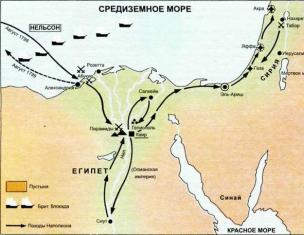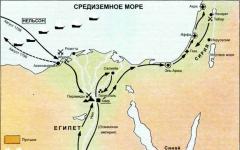State of water resources Leningrad region worries many. Both residents of this vast and populous region, and city dwellers with country houses, are concerned about the quality of water in wells and boreholes, rivers and lakes. How justified is this concern? Let's try to figure it out.
It's not just the state of the water that is causing concern centralized systems ah water supply, but also in wells and boreholes. Representatives of regional SES confirm that water quality in reservoirs has deteriorated, and significant wear treatment facilities does not add optimism. If we talk about private owners who have wells and water wells, they will also have to worry about organizing a water treatment system.
The most common type of pollution is wastewater discharged into open reservoirs, drainage ditches and filtration wells. Rivers, lakes and groundwater are subject to pollution. Moreover, this water is discharged not only into water bodies, but also into reclamation ditches, filtration fields and simply into open areas, which leads to pollution of both surface and groundwater. There are other factors, in particular, 16 landfills and 217 landfills for household, industrial and construction waste located in the region.
In addition, in the closed areas of the enterprises there are 15 sludge dumps, 6 ash dumps and 27 other storage facilities for various industrial wastes. There are two underground disposal facilities for industrial waste in the region: the State Unitary Enterprise “Poligon Krasny Bor” and the radioactive waste repositories of the experimental plant of the Russian Research Center “Applied Chemistry”. And if you also take into account the warehouses of mineral fertilizers, manure and dung storage facilities, which sometimes break through, as a couple of years ago near Gatchina, then the picture turns out to be completely sad.
If you believe the deputies of the Legislative Assembly of the Leningrad Region, then the anxiety is quite natural. Representatives of the standing commission under this government body claim that the quality of water used by residents of the region leaves much to be desired. A regional SES analysis carried out several years ago showed that about 12% of water samples do not meet microbiological standards, and about 20% do not meet sanitary-chemical standards. Among the reasons cited are a general deterioration in water quality in the reservoirs of the Leningrad region, as well as severe wear and tear of the region’s water intake and treatment facilities (up to 60%).
Of course, in this respect, our region is not much different from others: according to the Russian Academy of Medical Sciences, over 65% of the population Russian Federation forced to consume poor quality drinking water. But for some reason this does not calm me down. According to research by ecologists and sanitary doctors, the most polluted natural water from surface sources: lakes, rivers, wells. But water from wells often does not meet the requirements of SanPiN 2.2.4.1175-02 “ Drinking water and water supply populated areas. Hygienic requirements for water quality in non-centralized water supply. Sanitary protection of sources" and SanPiN 2.1.4.1074-01 "Drinking water. Hygienic requirements for water quality in centralized drinking water supply systems. Quality control." There are many reasons for this, primarily the intensive use of water bodies for water supply, wastewater intake, energy needs, shipping, fishing, mining, water recreation, etc. (To be continued...)
Leningrad region- a subject of the Federation in the north-west of the European part of Russia. The region is located on the East European Plain on the coast Gulf of Finland Baltic Sea. In most of the region's territory, mainly on the coast of the Gulf of Finland and in the valleys of large rivers, there are lowlands - Vyborgskaya, Priozerskaya, Priladozhskaya, Predglintovaya, Plyusskaya, Luzhskaya, Volkhovskaya, Svirskaya and Tikhvinskaya and others - with traces of the activity of glacial waters. Between the Gulf of Finland and Lake Ladoga lies the elevated Karelian Isthmus, and to the south stretches the Baltic-Ladoga ledge, the so-called Glint, which is the shore of the ancient sea.
Leningrad region is part of the Northwestern Federal District. Location of supreme authorities state power region - St. Petersburg, which is an independent subject of the federation as a city federal significance.
The region's territory is 83,908 km2, the population (as of January 1, 2017) is 1,791,916 people.
Surface water resources
The river network of the Leningrad region is represented by more than 25.1 thousand rivers with a total length of about 50 thousand km (the density of the river network is 0.6 km/km 2), most of which are small rivers and streams. The rivers of the Leningrad region are characterized by mixed feeding with a predominance of snow and rain. The rivers of the region belong to the Eastern European type of water regime, they are characterized by spring floods with a sharp increase in water level, summer-autumn low water, interrupted by rain floods, mainly in autumn, and low winter low water. They freeze at the end of November - December, open in April - May. The opening of large rivers is accompanied by ice drift. The main river of the Leningrad region is the Neva, flowing from Lake Ladoga and flowing into the Neva Bay of the Gulf of Finland in the Baltic Sea. Other large rivers region - Vuoksa, Volkhov and Svir, flowing into Lake Ladoga, the Narva and Luga rivers, flowing into the Narva and Luga bays of the Gulf of Finland, and other rivers.
The area and number of lakes and artificial reservoirs, swamps and wetlands are variable; they depend on natural (water regime, climatic phenomena, swamping, etc.) and anthropogenic (drainage of territories, flow regulation, etc.) factors.
The Volga-Baltic Waterway, connecting the basins of the Baltic and Caspian Seas, passes along the Neva and Svir rivers, Lakes Ladoga and Onega. In the north of the region there is the Saimaa Canal, connecting Lake Saimaa located in Finland and the Baltic Sea.
Groundwater resources
The functions of providing public services and managing federal property in the field of water resources in the region are carried out by the Water Resources Department of the Nevsko-Ladoga Bank of Water Resources in the Leningrad Region.
The powers in the field of water relations transferred to the constituent entities of the Russian Federation, the functions of providing public services and managing regional property in the field of water resources in the region are carried out by the Committee on natural resources Leningrad region.
The State Program “Protection of environment Leningrad Region", aimed at solving such problems as restoring water bodies, ensuring the safe operation of hydraulic structures, ensuring the protection of the population and economic facilities from the negative effects of water, and others.
When preparing the material, data from the State reports “On the state and protection of the environment of the Russian Federation in 2015”, “On the state and use of water resources of the Russian Federation in 2015”, “On the state and use of land in the Russian Federation in 2015”, were used. “On the environmental situation in the Leningrad region in 2015”, collection “Regions of Russia. Socio-economic indicators. 2016". The ratings of regions for surface and underground water resources do not take into account the indicators of cities of federal significance - Moscow,
Represented by the eastern part of the Baltic Sea - the Gulf of Finland, Lakes Ladoga and Onega, natural and artificial reservoirs, rivers, canals and swamps. More than 13% of the region’s territory, excluding the Gulf of Finland and Lake Ladoga, occupy water bodies and 14% of the region’s territory is occupied by swamps.
Largest value area occupied water surface is typical for the Priozersky (14%), Vyborg (7%) and Slantsevsky (6%) districts, and the smallest (0.6%) in the Volosovsky and Tosnensky districts.
The largest water body in the region is. The Gulf of Finland occupies 7% of the area of the Baltic Sea. Main characteristics of the bay: drainage basin - 421 thousand km2, water inflow - 109 km3 per year, bay area 29.5 thousand km2, average depth - 38 m, maximum depth 115 m, water volume - 1.125 thousand km3, salinity - 3.5%, The predominant direction of currents in the surface layer is counterclockwise, the share of the Neva River in the total river flow is 70%. The eastern part of the Gulf of Finland is called the Neva Bay. To the north is the Vyborg Bay, the Koporskaya, Luga Bays and Narva Bay cut into the southern coast.
The main rivers of the Gulf of Finland basin are the Neva River, flowing from Lake Ladoga, the Luga River, which flows into the territory of the Leningrad Region from Novgorod region, and the Plyussa River flows from the Pskov region, the mouth section passes through the Slantsevsky district of the Leningrad region and flows into the Narva reservoir.
The pool is complex system, including the catchments of lakes: Onega, Ilmen and Saimaa (Finland). It fully or partially includes the territories of the Republic of Karelia, Leningrad, Novgorod, Pskov, and Vologda regions.
The catchment area is 280 thousand square meters. km. The area of Lake Ladoga is 17,700 square meters. km (with islands 18135 sq. km). The average length of the lake is 219 km, average width- 83 km, average depth - 51 m (the greatest - 230 m west of the island of Valaam). Length coastline lakes - 1870 km. 32 rivers, more than 10 km long, flow directly into Lake Ladoga, and only one river flows out - the Neva. The largest rivers flowing into Lake Ladoga include the Svir River, flowing from Lake Onega, the Vuoksa River, originating in Finland, the Volkhov River, flowing from Lake Ilmen, the Syas River and others.
Lake Ladoga washes the territory of five districts - Volkhovsky (coastline length 159 km), Priozersky (132 km), Kirovsky (102 km), Vsevolozhsky (87 km), Lodeynopolsky (24 km).
The catchment area of Lake Onega is 63 thousand square meters. km. The area of the lake without islands is 9720 square meters. km, length - 247 km, average width - 40 km, average depth - 31 m. Lake Onega washes. The length of the coastline within the boundaries of the region is 38 km.
More than 25 thousand rivers and streams flow through the region total length more than 50 thousand km. Of these, about 90% are small watercourses with a length of less than 10 km. The largest rivers in the region are the Neva, Vuoksa, Svir with its tributaries Oyat and Pasha, Volkhov, Luga and Narva with Plyussa. The river network is relatively evenly distributed throughout the territory, with the exception of the Izhora plateau. The density of the river network averages 0.6 km per square meter. km.
There are more than 41,600 lakes in the region, which are distributed extremely unevenly throughout the territory. The most lakes are concentrated in the north of the Karelian Isthmus (Vyborg and Priozersky districts) and in the northeast (Podporozhsky district), the fewest lakes are in the Volosovsky district. The lakes are dominated by small ones with a mirror area of less than 1 sq. km and a depth of 2 m. The largest lakes with a mirror area of more than 10 sq. km and an average depth of 10 m are concentrated in the north of the Karelian Isthmus (Lake Vuoksa, Sukhodolskoe, Pravdinskoe, Otradnoe, Balakhanovskoe ) and in the Luga region (Vyalye-Ostrechno, Samro, Vrevo, Cheremenetskoye,
Syabero).
On the territory there are six large reservoirs Narvskoe, Nizhnesvirskoe, Verkhnesvirskoe, Volkhovskoe, Luzhskoe, Nizhne-Oredezhskoe, with a useful volume of about 0.45 km3. The largest is the Verkhnesvirskoye reservoir with a surface area of 230 km2, followed by the Narva reservoir - 191 km2. In addition to those listed, there are a number of small reservoirs on the rivers Sista, Suma, Okhta, Oredezh, Izhora, Tikhvinka, etc.
There are five shipping canals in the region: Saimaa, Staroladozhsky, Novoladozhsky, Onega, Tikhvinsky, with a total length of more than 400 km. Currently there are three canals - Saimaa, Novoladozhsky and Onega. The Saimaa Canal connects the Saimaa lake system in the area of the Finnish city of Lappenranta with the Baltic Sea near the city of Vyborg. The Novoladoga and Onega canals are part of the Volga-Baltic waterway. The Staraya Ladoga and Tikhvin canals are currently not in use.
In St. Petersburg and in the territories administratively subordinate to the city mayor's office, there are 106 reservoirs with an area of more than 1 hectare. The total surface area of these reservoirs is about 2087 hectares. Most of the reservoirs are of artificial origin. It has the greatest lake content northern part cities and the northern coast of the Neva Bay (including Sestroretsk). There are more than 20 reservoirs here, total area- 1300 hectares.
Water resources, along with forest reserves, constitute the main wealth of the region. The river network in the region is dense, almost all rivers belong to the Baltic Sea basin. The largest rivers - Neva, Volkhov, Svir, Vuoksa, Narva, Syas, Luga - have significant water resources and are used for shipping and timber rafting. There are 25,109 rivers and watercourses flowing through the territory, including 19 rivers more than 100 km long. All these water bodies are of fishery importance. In their drainage areas there are (without) 41,579 lakes with a surface area of 21,833.25 square meters. km, including those of fishing importance - 825 lakes, with a surface area of 1391.52 sq. km. River transport is important for the region. The total length of navigable river and lake routes is about 2000 km. Main role plays the Volga-Baltic waterway; communication with the White Sea is carried out through the White Sea-Baltic Canal; The Saimaa Canal has been operating since 1968. River ports in the region are located in Petrokrepost, Sviritsa, Voznesenye, Podporozhye, Lodeynoye Pole. The sea trade port is located in the city of Vyborg.
Water resources are the most important wealth of the Leningrad region. Reserves fresh water are estimated at 1280 m3. The water is slightly mineralized (soft) and is good for drinking and technical water supply. Water resources are represented by the eastern part of the Baltic Sea - the Gulf of Finland, Lakes Ladoga and Onega, natural and artificial reservoirs, rivers, canals and swamps. More than 13% of the region’s territory is covered by water bodies, excluding the Gulf of Finland and Lake Ladoga, which are home to approximately 80 species of fish. The largest area occupied by the water surface is characteristic of the Priozersky (14%), Vyborg (7%) and Slantsevsky (6%) districts, and the smallest (0.6%) in the Volosovsky and Tosnensky districts. The largest water body of the Leningrad region is the Gulf of Finland, which occupies 7% of the area of the Baltic Sea. Main characteristics of the bay: drainage basin - 421 thousand km2, water inflow - 109 km3 per year, bay area 29.5 thousand km2, average depth - 38 m, maximum depth 115 m, water volume - 1.125 thousand km3, salinity - 3 .5%, the predominant direction of currents in the surface layer is counterclockwise. The eastern part of the Gulf of Finland is called the Neva Bay. To the north is the Vyborg Bay, Koporskaya, Luga Bay and Narva Bay cut into the southern coast.
There are more than 41,600 lakes in the region, which are distributed extremely unevenly throughout the territory. The most lakes are concentrated in the north of the Karelian Isthmus (Vyborg and Priozersky districts) and in the northeast (Podporozhsky district), the fewest lakes are in the Volosovsky district. The lakes are dominated by small ones with a surface area of less than 1 km2 and a depth of 2 m. The largest lakes (more than 10 km2 and an average depth of 10 m) are concentrated in the north of the Karelian Isthmus (Vuoksa, Sukhodolskoye, Pravdinskoye, Otradnoye, Balakhanovskoye) and in the Luga region (Vyalye -Ostrechno, Samro, Vrevo, Cheremenetskoye, Syabero). The largest lakes are Ladoga and Onega. Lake Ladoga ranks first in Europe in size, its area is 17,700 km2 (with islands 18,135 km2), drainage area is 280 thousand km2, length - 219 km, average width - 83 km, average depth - 51 m, length of the coastline - 1870 km. 32 rivers, more than 10 km long, flow directly into Lake Ladoga, and only the Neva River flows out. Lake Ladoga washes the territory of five districts of the Leningrad region - Volkhovsky (coastline length 159 km), Priozersky (132 km), Kirovsky (102 km), Vsevolozhsky (87 km), Lodeynopolsky (24 km).
Lake Onega is part of the Podporozhye district. The length of the coastline within the district is 38 km. The catchment area of Lake Onega is 63 thousand km2, the area of the lake without islands is 9720 km2, length is 247 km, average width is 40 km, average depth is 31 m.
More than 25 thousand rivers and streams flow through the region with a total length of more than 50 thousand km. Rivers connect the Leningrad region not only with the regions of Russia, but also with foreign countries. The largest rivers in the region are the Neva, Vuoksa, Svir (flowing from Lake Onega) with tributaries Oyat and Pasha, Volkhov (flowing from Lake Ilmen), Luga (flowing from the Novgorod region) and Narva with Plyussa (flowing from the Pskov region, mouth section passes through the Slantsevsky district and flows into the Narva Reservoir). The river network is relatively evenly distributed throughout the territory, with the exception of the Izhora plateau. The density of the river network is on average 0.6 km/km2.
On the territory of the region there are six large reservoirs Narvskoe, Nizhnesvirskoe, Verkhnesvirskoe, Volkhovskoe, Luzhskoe, Nizhne-Oredezhskoe, with a useful volume of about 0.45 km3. The largest is Verkhnesvirskoye (230 km2), followed by Narvskoye (191 km2). In addition to those listed, there are a number of small reservoirs on the rivers Sista, Suma, Okhta, Oredezh, Izhora, Tikhvinka, etc.
The water bodies of the Leningrad region are favorable for beach swimming holidays (swimming season from late May to September), and the northern waters are suitable for the development of sports recreation - rafting on northern rivers, yachting on Lakes Ladoga and Onega ( largest center yachting, windsurfing and jet skiing - Gogland Island)
Water bodies of the Leningrad region are favorable for recreation.
Every city, big or small, has its own main river - the one on whose banks it stands.
For St. Petersburg, such a water artery is, of course, the Neva. Despite the strategic importance of the sea, it determined the birthplace of the city.
The Neva is a small river, by Russian standards. Its length is only 74 kilometers, and 32 of them flow within the city limits. But despite its small length, the full flow of the Neva is impressive: it carries as much water as the Dnieper and Don rivers combined, dumping more than 1.5 thousand cubic meters into the Gulf of Finland every second.
The Neva is the axis around which life in St. Petersburg revolves. ...I leaned against the window in thought and looked at the Neva. She rested and dozed on her granite shores, and in the quiet, silver waters the Moon, bathing, trembled. (A. Odoevsky)
The Neva flows from Lake Ladoga. It was here, on the island, that the Novgorod fortress of Oreshek was founded in 1323, which later became Shlisselburg.
The most bottleneck The Neva River is the Ivanovo Rapids, and the widest is at the Neva Gate, at the mouth, where it spills over 1200 meters. The Dos River is very deep - on average 8 - 11 meters, and its greatest depth is opposite Arse-nal street, it is 24 meters. The river is not rich in fish and vegetation. Basically, it is a “transit road” for fish coming here to spawn or moving from the Gulf of Finland to Lake Ladoga.
St. Petersburg can rightfully be called not only a city of rivers and canals, but also a city of openwork fences and bars.
Forged, cast, iron, cast iron, shining with copper and gilding, with pillars recessed into a granite base. This is real metal lace in the stone dress of the city!
St. Petersburg is the “capital of floods.” Over the 300 years that St. Petersburg has stood on the shores of the Gulf of Finland, it has more than once become a victim of a raging natural disaster. Already in the year the city was founded, on the night of August 20, 1703, the first flood occurred: in a few hours the water rose by 2 meters. Floods occur almost every year, but most of them occurred in two autumn months -
o October and November, with 70% of floods occurring at night or early in the morning. The most catastrophic floods occurred in 1777, 1824 and 1924. During the time of Catherine, all the fountains of the Summer Garden died, most of the trees were uprooted, and many wooden houses were torn off their foundations and carried into the sea.
On September 23, 1924, the raging Neva rushed into the city - only houses - islands - rose up! Water covered 65 sq km of former land. The losses were enormous, 19 bridges were demolished, more than 5 thousand houses were damaged, and many people died. These troubled days are remembered by many old-timers of St. Petersburg.
Reminders of past troubles for city residents are memorial plaques with the dates of floods of 1752, 1777, 1788, 1824, 1924 and 1975, which can be seen under the arch of the Neva Gate of the Peter and Paul Fortress.
Almost all cities love to look into the waters of the seas, rivers, lakes and canals, admiring their reflection. The northern capital of Russia - “Russian Venice”, as it is called, is no exception to this rule: there is plenty of water (both sea and fresh) in it!
The presentation was prepared by Yulia Romanovna Kartuzova, teacher primary classes GBOU Secondary School 127 St. Petersburg







